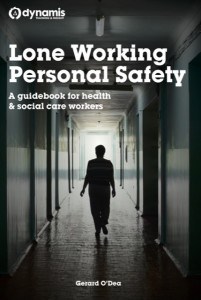One of the key questions we have asked our colleagues in the field of training, as we have visited with them to share our approach is: “What stimulus are you preparing your staff to respond to?”
The question is somewhat oblique, but it focusses on the heart of the matter – what do we want our attendees to learn? For example our colleague Mark Dawes undertook a detailed study of the ways in which a cohort of 356 nurses from one NHS Trust had been assaulted.
Mark asked these nurses how they had been physically assaulted in the line of their work, and found that “in the vast majority of cases nursing staff were facing impact type assaults from a front-on position”. Other studies have found that being being attacked by a punch or a slap or kick accounted for over half of the incidents of assault on nursing staff.
This is what we mean by our question “To what stimulus are you preparing your staff to
respond?” because in a breakaway training programme, the stimulus we want to prepare our staff for must be the most probable attack they are likely to face, if they are assaulted.
However, when we look at some of the training programmes some organisations are delivering and the types of technique involved, we have observed that:
- the majority of ‘breakaways’ taught are responses to being grabbed, not the punch or slap
- training course technical repertoires do not deal with impact-type assaults very well, if at all
- training courses do not address pre-assault behaviours (as distinct from aggression signs)
From the field of sports science, we know that for the task of ‘blocking a punch’.:
“Stimulus Identification is the primary information-processing requirement to reduce Reaction Time” (Schmidt and Wrisberg 2008)
So we might then ask – how do we prepare our staff to react more effectively, in the face of studies which show that IF they are assaulted, there is a high probability the attack will be an impact from the front, such as a punch, slap or shove?
We need to look at the relationship between Stimulus Identification and Reaction Time , and how focussing on the pre-assault behaviours and mannerisms of a subject may assist in speeding reaction time.
Our Breakaway course incorporates much of this theory and provides examples of how to incorporate good practice into training design.

———————————————-
Gerard O’Dea is a conflict management, personal safety and physical interventions training consultant. He is the training director for Dynamis, a specialist in personal safety and violence reduction initiatives and the European Adviser for ‘Verbal Defense and Influence’, a global programme which addresses the spectrum of human conflict. www.dynamis.training
Gerard’s book on Lone Worker Personal Safety is available on Amazon Kindle and Paperback.



